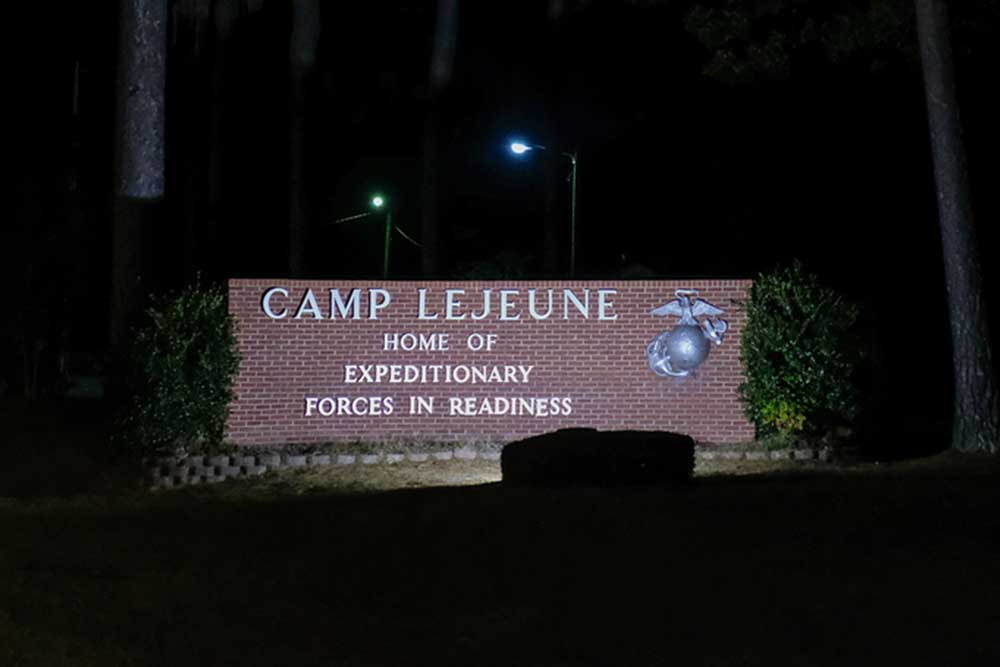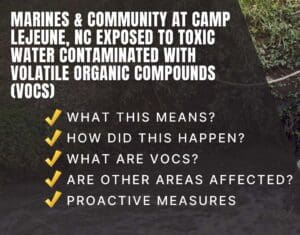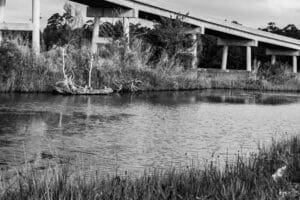You have likely seen a commercial while watching your favorite news broadcast or an email message about the Camp Lejeune water contamination lawsuit. Perhaps you have even seen a billboard or two. It is all the buzz right now following the passing of the Camp Lejeune Justice Act of 2022 that occurred on August 10, 2022. The anticipation grew for weeks and months as the likelihood of this bill passing was highly favorable. However, are you wondering what it’s all about?
The uniqueness of this lawsuit is that it is not a product contamination like other lawsuits that have come about over the years (like talcum powder and Roundup.) There is nothing to recall. There is not a company behind the product. In fact, this has to do with the U.S. military. This lawsuit is also unique in that it is about 35+ years in the making.
There have been other claims and lawsuits filed by water contamination victims over these many years. Some have received and continue to receive benefits from veteran affairs. Tragically, many were denied benefits or compensation and their cases were kicked down the road and delayed long enough that they were dismissed, reached a statute of limitation, or the claimant died. Others attempted to file claims or lawsuits too late because of statute of limitations and were denied or dismissed. The Camp Lejeune Justice Act of 2022 changes all of that.
What Is the Camp Lejeune Lawsuit About?
Camp Lejeune is a United States military base and training facility occupying approximately 250 square miles in Jacksonville, North Carolina. The base was formed in 1941 and bears the name of Lieutenant General John Archer Lejeune, a 40-year, highly decorated veteran who is often referred to as “the greatest of all Leathernecks”. Leatherneck is a military nickname for a member of the U.S. Marine Corp. According to its website, Camp Lejeune is the “Home of Expeditionary Forces in Readiness” and “is a war-fighting platform from which our Marines and Sailors train, operate, launch and recover while providing facilities, services and support that meet the needs of our warfighters and their families.”
In the 1980’s, volatile organic compounds (VOCs) and carcinogenic chemicals were discovered in the water supply at Camp Lejeune U.S. Marine Corps base. The most harmful chemicals found were tetrachloroethylene, also known as perchloroethylene (PCE), a clear, liquid chemical commonly found in dry cleaning solvents, and trichloroethylene (TCE), commonly found in degreasers and metal cleaners. PCE is also used as a fumigant to kill insects. TCE is also used in the making of refrigerants. Micro amounts of these chemicals are not harmful; but unusually high amounts in drinking, cooking, cleaning or bathing water have been found to be carcinogenic and very harmful to one’s health and/or the health of infants born to women exposed to these chemicals during pregnancy. These dangerous chemicals can be absorbed into the body by ingesting the water by drinking or consuming food cooked in the contaminated water, absorbed through the skin, or inhaled into the lungs.
How was this water contamination discovered? What are the effects of exposure to these dangerous chemicals? How can Join the Many help if you or someone you know was affected?
A Discovery at Camp Lejeune
In 1980, in accordance with new Environment Protection Agency (EPA) regulations brought about by the Safe Drinking Water Act of 1974, the U.S. Marine Corps began testing the water supplies throughout the Camp Lejeune base for contaminants. The Safe Drinking Water Act of 1974 was the first legislation of its kind that established national safe-drinking standards and regulations against natural and man-made water contaminants that would be enforced by the recently established (1970) Environmental Protection Agency.
Testing was first done by the U.S. Army Environmental Hygiene Agency and was completed in March 1981. Tests were further conducted and confirmed by Grainger Laboratories in 1982. As a result of this testing, it was discovered that base water supplies contained unacceptable levels of PCE and TCE as well as other dangerous chemicals, such as benzene and vinyl chloride. Benzene is a chemical used in the making of plastics, resins, and nylon and synthetic fibers. Vinyl chloride is what PCE and TCE break down to over a period of time.
One source of the chemical water contamination came primarily from a dry cleaning facility that dumped tens of thousands of gallons of hazardous PCE chemicals into the water wells supplying the base. Another source of chemical contamination came from TCE solvents used to clean military weapons and machinery on the base. The levels of PCE and TCE were found to be exponentially higher than the EPA’s maximum safe levels. PCE was found in the Tarawa Terrace water treatment and supply facility. TCE was also found at the Hadnot Point water treatment facility.
Despite the test results reporting heavily contaminated water, and testing agents advising base officials that the water supply wells were poisoned with toxic chemicals and needed to be shut down immediately, USMC officials fraudulently reported back to the EPA that there were no contamination issues at Camp Lejeune and there was no action taken to shut these water supplies off. It wasn’t until 1984, after additional testing was conducted and reported, that they began shutting down the affected water wells.
The Effects of Water Contamination
The dangerously toxic water contamination at Camp Lejeune has been shown to have caused a number of different cancers, diseases, birth defects and other illnesses. The Agency for Toxic Substances and Disease Registry (ATSDR) is a federal public health agency of the U.S. Department of Health and Human Services. They exist to protect communities from the harmful effects related to exposure to natural and man-made hazardous substances. They do this by investigating environmental health threats and conducting research on the health impacts of hazardous exposure. The ATSDR has conducted numerous studies on the harmful health effects of the chemical contaminants found in the Camp Lejeune water supply.
Cancers related to the water contamination include bladder cancer, breast cancer, esophageal cancer, kidney cancer, leukemia, liver cancer, lung cancer, multiple myeloma and non-Hodgkin’s lymphoma as well as aplastic anemia, brain cancer, cervical cancer, colon cancer, ovarian cancer and prostate cancer.
Non-cancerous effects of the Camp Lejeune water contamination include ALS (Lou Gerhig’s Disease), birth defects as well as infertility and miscarriage, brain injuries, cardiac defects, fatty liver disease, hepatic steatosis, neurobehavioral effects, Parkinson’s disease, plastic anemia (and other bone marrow conditions), renal toxicity and scleroderma.
It is believed that between 750,000 to a million people who were stationed at the Marine base or were dependents of military personnel (including civilian employees at the base) have been exposed to this contaminated water used for drinking, cooking, cleaning and bathing from August 1, 1953 to December 31, 1987.
Were You Affected? It’s Time to Act
Under the newly passed Camp Lejeune Justice Act of 2022, the federal government has allotted $6.7 billion to compensate victims of the water contamination. The passing of the Camp Lejeune Justice Act of 2022 is the accomplishment of several years of persistent work by those in Congress who sought just compensation for the victims of the water contamination tragedy.
Even if you were one of the hundreds of victims that have previously filed a claim that was dismissed due to statute of limitations or if you have or are currently receiving disability benefits, you can still file a lawsuit.
If you or a loved one or someone you know was stationed, worked at or visited Camp Lejeune for at least a 30-day period (continuous or non-continuous) between August 1, 1953 and December 31, 1987 and developed cancer or disease or miscarried or suffered a birth defect or abnormality, even if that person has already passed away, there may be significant compensation awarded.
There is not an equal amount that will be divided amongst all of the complainants. Compensation will be determined on a case-by-case basis and will depend largely upon the type of injury incurred by the water contamination. Those who died or are still suffering with cancer will likely be compensated the most.
If you can prove that you were at the Camp Lejeune Marine base for 30 days between August 1, 1953 and December 31, 1987 and have suffered or are suffering from the dangerous and life-threatening effects of the water contamination found at the base, there is a high likelihood that you will receive some sort of compensation. It is important that you begin now to gather the information and documentation (including medical records) and otherwise evidence that will prove your case.
These are daunting tasks, but we can help. After your case review, if our team determines you may qualify for a settlement, we can do the heavy lifting of gathering some of this information for you.




